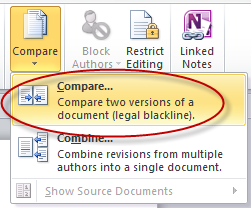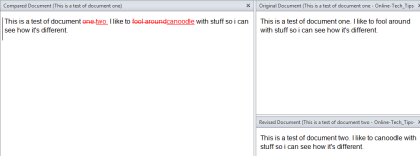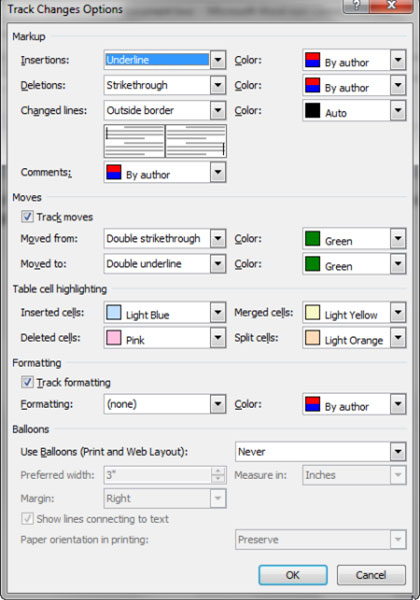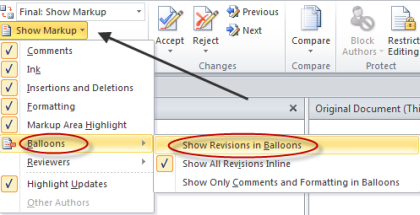Use document comparison feature in Word 2010
Comparing documents together is a little-known feature of Microsoft Word 2010 but is really handy for everyone, especially for those who work with multiple documents. Sometimes you accidentally save the document under different names and variants, when you go back to open the old document, you find some versions of it while you only need one fully documented document. Compare them to get a single document. Or sometimes many people edit on one document and want to combine it into one complete document. That's when the comparison feature works.
The document comparison feature is easy to use, to start, click the Review tab in the main ribbon, then click the Compare icon:

You will receive a drop down menu as follows:

Select Compare . a window will open:

Click the arrow in the Original document section to select the original document, do the same for the modified document in Revised document . When the name of the two documents is selected, the box will appear. Two-way arrow button is used to change the role of original documents and modified documents. You can tick or unmark the box to set comparison options but it's better to leave the default. Click OK to get the result:

Results are displayed in the full Word screen in 4 small windows, we will learn the function of each window. On the left is the Summary window that summarizes the changes between the two documents. Next, the window in the center of the screen displays the document containing both original and edited information. Finally, on the right are 2 windows showing copies of the original and modified documents.
You can see clearly the middle and right windows:

Here you can see the red letters are new modifications, while the dashed letters indicate that they have been corrected.
Also, notice the Tracking feature in the Review tab that is turned on when you use Compare mode:

This means that you can use this option when comparing documents. For example, if you click on Track Changes , then Change Tracking Options , you will get the following pop-up window:

The purpose of these options is to allow you to define attributes of changes that Word registers when comparing two documents.
You can also adjust how Word displays changes in documents, for example you want them to be displayed as " bubbles ", click Show Markup , point to Balloons and then Show Revisions in Balloons :

Here are the results:

In addition, under Change :

You can click on the Previous or Next button to move back and forth changes in the document and then click Accept to accept or Reject to deny changes at each step every time you move. Once you have edited it, you just need to save the document in the normal way to export the most complete product.
 Add Structure to Diagram in Visio 2010 using List and Container
Add Structure to Diagram in Visio 2010 using List and Container Assign Structure to Diagram in Visio 2010 using Container
Assign Structure to Diagram in Visio 2010 using Container Some basic features of Google Docs
Some basic features of Google Docs To make better use of Google Docs
To make better use of Google Docs 8 tips for people who use Microsoft Office
8 tips for people who use Microsoft Office Backup and restore Office 2010 Ribbon toolbar
Backup and restore Office 2010 Ribbon toolbar